- Clone
- DX22 (See other available formats)
- Regulatory Status
- RUO
- Other Names
- KP43
- Isotype
- Mouse IgG1, κ
- Ave. Rating
- Submit a Review
- Product Citations
- publications
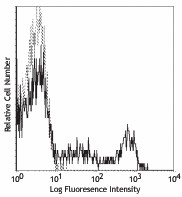
-

Human peripheral blood lymphocytes stained with DX22 PE -

Confocal image of human lymph node sample acquired using the IBEX method of highly multiplexed antibody-based imaging: CD117 (cyan) in Cycle 6, CD39 (blue) in Cycle 12, and CD94 (magenta) in Cycle 13. Images are prepared from formalin fixed paraffin embedded human kidney sections. Images are courtesy of Drs. Andrea J. Radtke and Ronald N. Germain of the Center for Advanced Tissue Imaging (CAT-I) in the National Institute of Allergy and Infectious Diseases (NIAID, NIH).
| Cat # | Size | Price | Quantity Check Availability | Save | ||
|---|---|---|---|---|---|---|
| 305506 | 100 tests | 196€ | ||||
CD94 is a 43 kD type II transmembrane glycoprotein also known as KP43. CD94 belongs to the C-type lectin superfamily and is present as a covalently linked heterodimer with NKG2 on the cell surface. CD94 is expressed by NK cells, a subset of γδ T cells, and NKT cells. The CD94/NKG2A complex serves as an inhibitory receptor specific for HLA-class I molecules.
Product DetailsProduct Details
- Verified Reactivity
- Human
- Reported Reactivity
- African Green, Baboon, Cynomolgus
- Antibody Type
- Monoclonal
- Host Species
- Mouse
- Immunogen
- NK cell line
- Formulation
- Phosphate-buffered solution, pH 7.2, containing 0.09% sodium azide and BSA (origin USA)
- Preparation
- The antibody was purified by affinity chromatography, and conjugated with PE under optimal conditions.
- Storage & Handling
- The antibody solution should be stored undiluted between 2°C and 8°C, and protected from prolonged exposure to light. Do not freeze.
- Application
-
FC - Quality tested
SB - Reported in the literature, not verified in house - Recommended Usage
-
Each lot of this antibody is quality control tested by immunofluorescent staining with flow cytometric analysis. For flow cytometric staining, the suggested use of this reagent is 5 µl per million cells in 100 µl staining volume or 5 µl per 100 µl of whole blood.
- Excitation Laser
-
Blue Laser (488 nm)
Green Laser (532 nm)/Yellow-Green Laser (561 nm)
- Application Notes
-
Additional reported applications (for the relevant formats) include: immunoprecipitation4, inhibition of NK cell-mediated lysis5, immunohistochemical staining of acetone-fixed frozen tissue sections, and spatial biology (IBEX)6,7.
- Additional Product Notes
-
Iterative Bleaching Extended multi-pleXity (IBEX) is a fluorescent imaging technique capable of highly-multiplexed spatial analysis. The method relies on cyclical bleaching of panels of fluorescent antibodies in order to image and analyze many markers over multiple cycles of staining, imaging, and, bleaching. It is a community-developed open-access method developed by the Center for Advanced Tissue Imaging (CAT-I) in the National Institute of Allergy and Infectious Diseases (NIAID, NIH).
- Application References
-
- Mizuki M, et al. 2000. Sarcoidosis Vasc. Diffuse Lung Dis. 17:54.
- Phillip J, et al. 1996. Immunity 5:163.
- Lazetic S, et al. 1996. J. Immunol. 157:4741.
- Lanier LL, et al. 1998. Immunity 8:693.
- Wooden SL, et al. 2005. J. Immunol. 175:1383.
- Radtke AJ, et al. 2020. Proc Natl Acad Sci USA. 117:33455-33465. (SB) PubMed
- Radtke AJ, et al. 2022. Nat Protoc. 17:378-401. (SB) PubMed
- Product Citations
-
- RRID
-
AB_314536 (BioLegend Cat. No. 305506)
Antigen Details
- Structure
- C-type lectin, type II transmembrane glycoprotein, covalently associates with NKG2, 43 kD
- Distribution
-
NK cells , T subset
- Function
- Inhibits NK function
- Cell Type
- NK cells, T cells
- Biology Area
- Immunology, Innate Immunity
- Molecular Family
- CD Molecules
- Antigen References
-
1. Lopez-Botet M, et al. 1997. Immunol. Rev. 155:165.
2. Moretta A, et al. 1997. Immunol. Rev. 155:105. - Gene ID
- 3824 View all products for this Gene ID
- UniProt
- View information about CD94 on UniProt.org
Related FAQs
- What type of PE do you use in your conjugates?
- We use R-PE in our conjugates.
- If an antibody clone has been previously successfully used in IBEX in one fluorescent format, will other antibody formats work as well?
-
It’s likely that other fluorophore conjugates to the same antibody clone will also be compatible with IBEX using the same sample fixation procedure. Ultimately a directly conjugated antibody’s utility in fluorescent imaging and IBEX may be specific to the sample and microscope being used in the experiment. Some antibody clone conjugates may perform better than others due to performance differences in non-specific binding, fluorophore brightness, and other biochemical properties unique to that conjugate.
- Will antibodies my lab is already using for fluorescent or chromogenic IHC work in IBEX?
-
Fundamentally, IBEX as a technique that works much in the same way as single antibody panels or single marker IF/IHC. If you’re already successfully using an antibody clone on a sample of interest, it is likely that clone will have utility in IBEX. It is expected some optimization and testing of different antibody fluorophore conjugates will be required to find a suitable format; however, legacy microscopy techniques like chromogenic IHC on fixed or frozen tissue is an excellent place to start looking for useful antibodies.
- Are other fluorophores compatible with IBEX?
-
Over 18 fluorescent formats have been screened for use in IBEX, however, it is likely that other fluorophores are able to be rapidly bleached in IBEX. If a fluorophore format is already suitable for your imaging platform it can be tested for compatibility in IBEX.
- The same antibody works in one tissue type but not another. What is happening?
-
Differences in tissue properties may impact both the ability of an antibody to bind its target specifically and impact the ability of a specific fluorophore conjugate to overcome the background fluorescent signal in a given tissue. Secondary stains, as well as testing multiple fluorescent conjugates of the same clone, may help to troubleshoot challenging targets or tissues. Using a reference control tissue may also give confidence in the specificity of your staining.
- How can I be sure the staining I’m seeing in my tissue is real?
-
In general, best practices for validating an antibody in traditional chromogenic or fluorescent IHC are applicable to IBEX. Please reference the Nature Methods review on antibody based multiplexed imaging for resources on validating antibodies for IBEX.
Other Formats
View All CD94 Reagents Request Custom Conjugation| Description | Clone | Applications |
|---|---|---|
| APC anti-human CD94 | DX22 | FC |
| FITC anti-human CD94 | DX22 | FC |
| PE anti-human CD94 | DX22 | FC,SB |
| Purified anti-human CD94 | DX22 | FC,IHC-F |
| Alexa Fluor® 647 anti-human CD94 | DX22 | FC |
| PerCP/Cyanine5.5 anti-human CD94 | DX22 | FC |
| PE/Cyanine7 anti-human CD94 | DX22 | FC |
| APC/Fire™ 750 anti-human CD94 | DX22 | FC |
| PE/Dazzle™ 594 anti-human CD94 | DX22 | FC |
| TotalSeq™-A0867 anti-human CD94 | DX22 | PG |
| TotalSeq™-C0867 anti-human CD94 | DX22 | PG |
| PE/Fire™ 810 anti-human CD94 | DX22 | FC |
| TotalSeq™-B0867 anti-human CD94 | DX22 | PG |
| TotalSeq™-D0867 anti-human CD94 | DX22 | PG |
| APC anti-human CD94 | DX22 | FC |
| APC/Cyanine7 anti-human CD94 | DX22 | FC |
| FITC anti-human CD94 | DX22 | FC |
| GMP APC anti-human CD94 | DX22 | FC |
Customers Also Purchased
Compare Data Across All Formats
This data display is provided for general comparisons between formats.
Your actual data may vary due to variations in samples, target cells, instruments and their settings, staining conditions, and other factors.
If you need assistance with selecting the best format contact our expert technical support team.
-
APC anti-human CD94
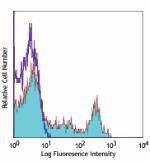
Human peripheral blood lymphocytes stained with DX22 APC -
FITC anti-human CD94

Human peripheral blood lymphocytes stained with DX22 FITC -
PE anti-human CD94

Human peripheral blood lymphocytes stained with DX22 PE 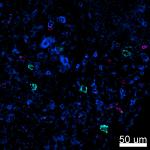
Confocal image of human lymph node sample acquired using the... -
Purified anti-human CD94
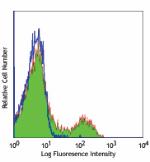
Human peripheral blood lymphocytes stained with purified DX2... -
Alexa Fluor® 647 anti-human CD94
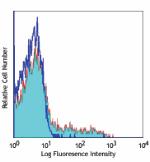
Human peripheral blood lymphocytes stained with DX22 Alexa F... -
PerCP/Cyanine5.5 anti-human CD94
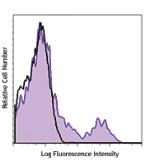
Human peripheral blood lymphocytes were stained with CD94 (c... -
PE/Cyanine7 anti-human CD94
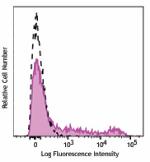
Human peripheral blood lymphocytes were stained with CD94 (c... -
APC/Fire™ 750 anti-human CD94
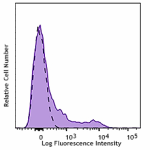
Human peripheral blood lymphocytes were stained with CD94 (c... -
PE/Dazzle™ 594 anti-human CD94

Human peripheral blood lymphocytes were stained with CD94 (c... -
TotalSeq™-A0867 anti-human CD94
-
TotalSeq™-C0867 anti-human CD94
-
PE/Fire™ 810 anti-human CD94
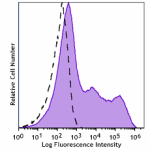
Human peripheral blood lymphocytes were stained with anti-hu... -
TotalSeq™-B0867 anti-human CD94
-
TotalSeq™-D0867 anti-human CD94
-
APC anti-human CD94
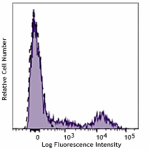
Typical results from human peripheral blood lymphocytes stai... -
APC/Cyanine7 anti-human CD94

Human peripheral blood lymphocytes were stained with anti-hu... -
FITC anti-human CD94

Typical results from human peripheral blood lymphocytes stai... -
GMP APC anti-human CD94

Typical results from human peripheral blood lymphocytes stai...
 Login / Register
Login / Register 










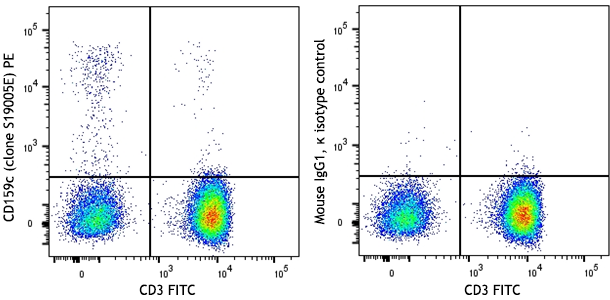


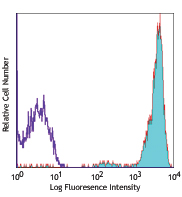



Follow Us